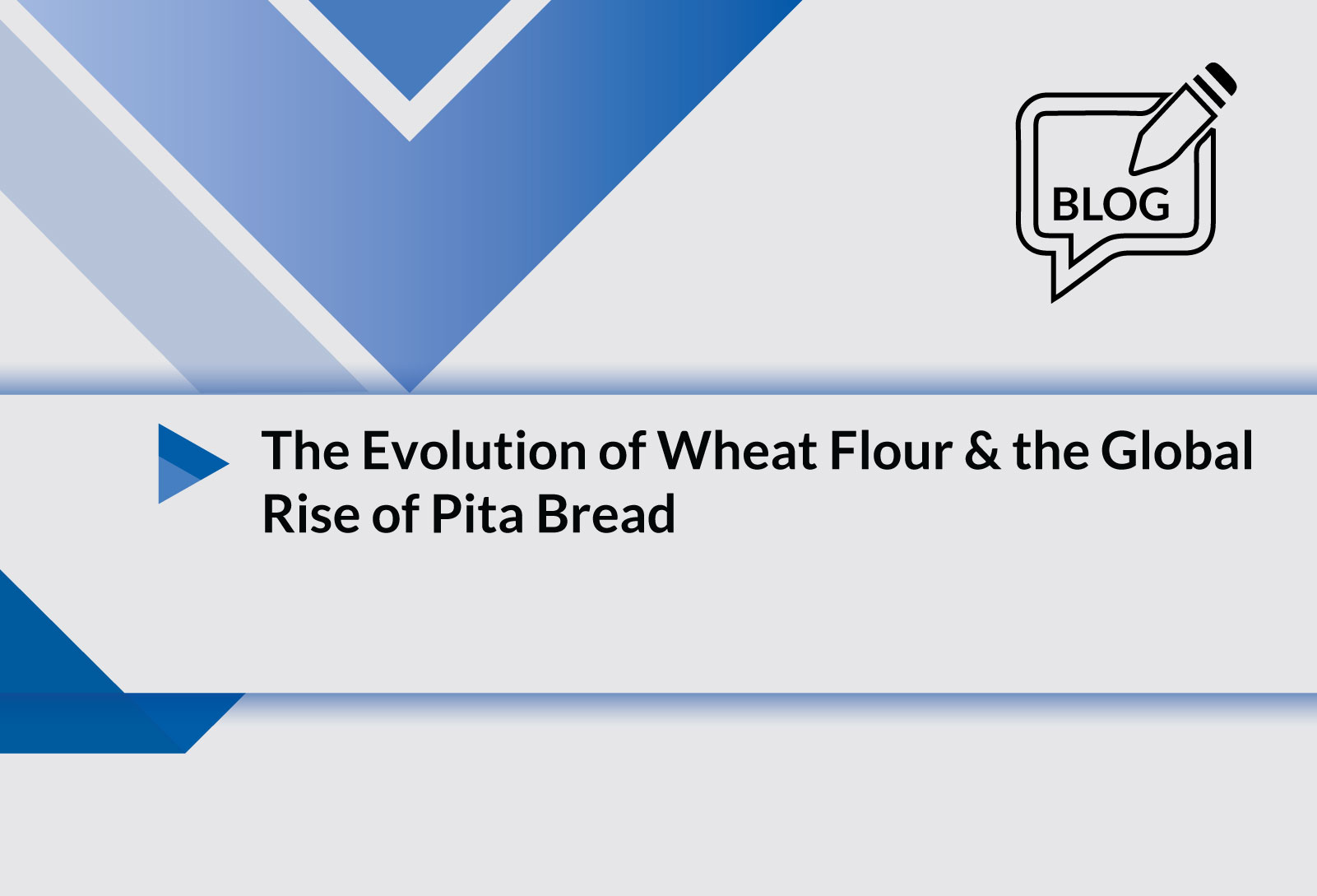- Home
- Blog
The Evolution of Wheat Flour and the Global Rise of Pita Bread

- Blog
The Evolution of Wheat Flour and the Global Rise of Pita Bread
A Journey Through Time: The Evolution of Wheat Flour and the Global Rise of Pita Bread
In the realm of culinary wonders, few staples hold as much historical significance and global appeal as wheat flour and pita bread. These unassuming ingredients have journeyed through time, transcending cultures and boundaries to become essential parts of our daily diets. Join us on a fascinating exploration of the history of wheat flour and the remarkable rise of pita bread to a mass-market phenomenon enjoyed worldwide.
The Roots of Wheat Flour: A Grain of Civilization:
The story of wheat flour is intertwined with the very essence of human civilization. From ancient Mesopotamia to the fertile banks of the Nile River, wheat has been cultivated for millennia. Early civilizations discovered the transformative power of milling wheat into flour, unleashing a wealth of culinary possibilities. Millstones carved from stone or shaped from wood paved the way for this essential process, gradually refining wheat into the fine powdery substance we know today.
Pita Bread Recipe Emerges: A Culinary Tradition Takes Shape:
Enter the star of our tale: pita bread. Originating in the Middle East and it is known to be the oldest type of bread, pita bread's history stretches back over 4,000 years. This flatbread's unique characteristic lies in its "pocket" structure, created by steam puffing up the dough during baking. The Pita Bread is a simple mixture of wheat flour, water, yeast, sugar and salt, highlighting the elegance of simplicity in culinary artistry.
The Pita Bread Calories: Decoding Pita Bread's Nutritional Profile:
In our quest for knowledge, let's take a closer look at the nutritional aspect of pita bread. A standard 6-inch pita round clocks in at around 165 calories, making it a relatively light choice compared to its counterparts. This inherent lightness, coupled with the fact that it can be easily filled with a variety of ingredients, has contributed to pita bread's enduring popularity as a healthy and versatile option.
The March to Mass Market: Pita Bread Goes Global:
The journey of pita bread from traditional staple to global sensation is a testament to its taste and adaptability. As Mediterranean cuisine began to captivate international palates, pita bread's prominence rose. The accessibility of its ingredients and the simplicity of its preparation made it a prime candidate for mass production. The late 20th century saw pita bread securing its place on supermarket shelves, becoming a cornerstone of the growing demand for diverse and convenient foods.
Cultural Exchange on the Dining Table:
Pita bread's rise was marked by its seamless integration into various culinary cultures. It became the perfect canvas for hummus, falafel, shawarma, and countless other delectable fillings. As globalization bridged gaps between countries and cultures, pita bread became a symbol of the interconnectedness of our world, reflecting the shared appreciation for delicious, satisfying, and nourishing foods.
Pita Bread's Timeless Appeal:
In conclusion, the story of wheat flour and pita bread is one of evolution and adaptability. From the humble beginnings of wheat cultivation to the international reach of pita bread, these elements have indelibly shaped the way we eat and connect. As we enjoy the convenience and comfort of pita bread today, let's remember the millennia of innovation and cultural exchange that have brought this beloved flatbread to our tables. So, the next time you savor a warm, fluffy piece of pita bread, you're not just enjoying a delicious snack – you're tasting a piece of history.





